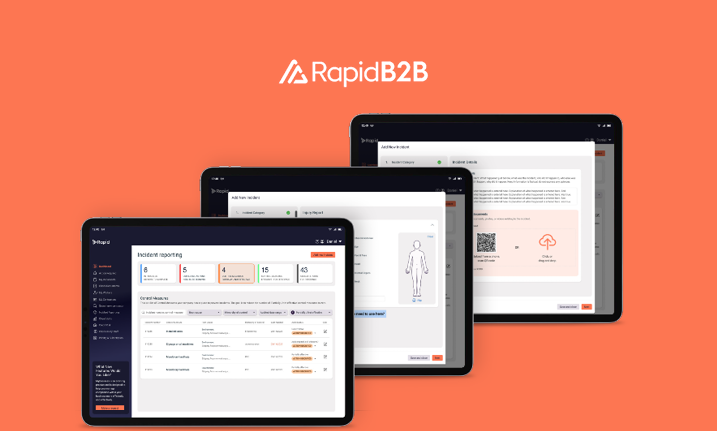

Motivating workers to report incidents can at times feel like an uphill battle, but developing a strong safety culture can transform this challenge into a walk in the park.
A safety culture is an organisational mindset that prioritises safety in every action and decision. It significantly impacts success by reducing hazards, involving employees in initiatives to improve workplace safety, and fostering employee well-being. Incident management can work harmoniously within this framework.
A truly safe work environment can be achieved by first overcoming barriers to incident reporting, cultivating a sense of ownership among employees, and then demonstrating leadership’s commitment to safety.
Overcoming barriers to reporting
Overcoming incident management barriers necessitates addressing both behavioural and structural obstacles within individuals and organisations.
Providing necessary resources and training
Equipping your workers with robust training programs, that include content on incident management, ensures they are informed about the correct protocols. Tailored sessions based on their roles can also create a more meaningful learning experience.
This could include educating employees on incident identification techniques. Incorporating hands-on exercises and “what-if” scenarios further embeds a proactive mindset.
Online induction software such as Rapid Induct can streamline the process for managers and workers. Access to training online means inductions can be completed anywhere and incorporating videos and interactive quizzes make any incident response examples clearer. Such software can also automatically reassign training when it expires, so your values will always remain top of mind.
Recommended reading: Is your company induction program effective?
Recognition and rewards for proactive reporting
Workers may fear the perceived consequences of reporting incidents, such as retaliation, losing their job, or not being believed. For example, some organisations may reward their staff based on number of injury-free days, which can lead to aggression when a reported incident jeopardises these rewards. This may create a culture of under-reporting which undermines safety efforts.
Instead, acknowledging and rewarding efficient reporting cultivates individual empowerment and an environment of trust. Some examples could be:
- Public recognition: celebrating individuals who report incidents during team meetings
- Incentive programs: offering tangible rewards such as gift cards or extra time off
- Personalised feedback: sending personalised thank-you notes or commendations
These recognition strategies normalise incident reporting as a part of everyday operations. It is essential to foster an environment where reporting incidents is embraced as a collective strength rather than as individual shortcomings.
Cultivating a sense of ownership and responsibility
By empowering each worker to take charge of their roles, they become integral players in maintaining safety standards, incident response, and incident management.
Providing tools and technology for easy reporting
Equipping workers with robust incident compliance software makes the safety management responsibilities clear. Specifically, incorporating online incident reporting software such as Rapid Incident Reporting into your business enables a seamless flow of critical information.
For example, mobile applications facilitate on-the-go incident response, empowering employees (regardless of location) to act swiftly. Rapid’s incident management tool can make reporting accessible to everyone by utilising online forms that are accessible through QR codes instead of paperwork.
Key performance indicators for safety culture
Key performance indicators (KPIs) serve as invaluable metrics to gauge the success of incident management efforts, offering clear insights and actionable data. Incident response software can streamline this process by collating data in one place, making it more accessible, accurate, and simplifying report generation.
Important KPIs include the number of reported incidents, near-miss reporting rates, and the resolution time of incidents, all of which highlight proactive safety engagement. Our AI safety software, Rapid Aware, can further assist by tracking key safety compliance indicators, such as the frequency of unsafe forklift proximity breaches.
Recommended reading: The future of incident management
By routinely analysing these indicators, organisations can identify trends, allocate resources effectively, and drive improvements in their risk management, continuously refining their approach. Additionally, celebrating milestones in these trends is essential for cultivating a sense of safety ownership and motivation among workers.
Show leadership commitment to safety
Leadership commitment to safety must be visible, unequivocal, and all-encompassing across all organisational levels. When leaders champion safety initiatives, they inspire their teams to prioritise safety proactively.
Establishing clear safety policies and procedures
Implementing unambiguous safety policies and procedures is pivotal for nurturing an environment of accountability and trust.
- Draft comprehensive safety policies that outline the responsibilities and expectations for all team members.
- Communicate these policies consistently across all channels to ensure everyone is well-informed.
- Encourage open dialogue about the policies, creating an environment where questions and clarifications are welcomed.
- Regularly review and update the policies to reflect the latest best practices and changing regulatory requirements.
Worksafe Queensland provides a general Work Health and Safety Policy template that can be used if you need help figuring out where to start.
When policies are clear and accessible, employees are more likely to adhere to them. It is also essential that senior management consistently model the correct behaviours (e.g., visibly participating in safety meetings), endorsing safety as a core value rather than an afterthought.
Follow through on corrective measures
When incidents occur, prompt incident management builds trust within the workforce that safety is a priority for the business. An online incident compliance system can make keeping track of reported incidents easy for all. For example, managers can receive notifications when an incident is investigated, and system users have real-time access to the status of corrective actions in their work areas.
Leaders must communicate corrective actions transparently and ensure these solutions are practical and sustainable. This visibility demonstrates a commitment to employee safety and encourages personal accountability among the team, solidifying trust and confidence.
Furthermore, it is crucial to maintain a feedback mechanism to assess the effectiveness of these measures. By actively soliciting feedback, leaders can foster an environment where employees feel valued and heard, further strengthening the safety culture.
Ultimately, this commitment to incident management not only helps the mitigation of future incidents but also motivates employees to remain vigilant in their safety responsibilities, driving a culture of continuous improvement.
How Rapid can help improve and streamline your incident management
With the right incident reporting system in place, you can embrace the future of incident management and enhance your organisation’s ability to manage workplace incidents proactively.
Want to see our incident management software in action? Talk to our sales team today to explore how Rapid can help protect your operations in the ever-changing business landscape.







